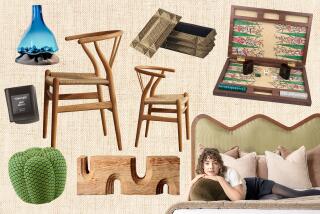Some Novelties Began as April Foolsâ Jokes
Tradition says April Foolsâ Day started in France in the 16th century. In those days, New Yearâs Day was April 1. In 1562, Pope Gregory introduced a new calendar, and the new year started Jan. 1. Many people would not accept the new date, so they kept celebrating New Yearâs Day on April 1. Those who accepted the new calendar called them âApril foolsâ and played tricks on them.
Our ancestors enjoyed many types of jokes, especially when they were in taverns or bars. Dozens of different kinds of puzzle mugs and glasses were used. One popular 18th century mug was made with a three-dimensional frog inside. When the drinker finished the ale, the frog could be seen.
Another joke was the drizzle mug. It was a mug or tall drinking vessel made with elaborate, modeled trim. The trim was actually a disguised drinking straw with strategically placed holes. If the drinker did not know the trick, the liquid dripped out of the holes and onto the drinkerâs shirt.
*
Question: My old folding rocker has its original tapestry upholstery. The tags under the seat read âCharlotte Chair Co.â
*
Answer: The Charlotte Chair Co. was founded in Charlotte, Mich., in 1912. It made upholstered, antique-reproduction furniture like your folding rocker. The firm is now called the Charlotte Co. and is in Belding, Mich.
Today it makes wooden, upholstered furniture as well as products for offices, health care and other institutional markets. The idea of a folding rocker became popular in the 1870s, and several designs were patented. The chairs were compact, lightweight and easily stored.
*
Q: I bought an oblong, ceramic dish with a cover about 30 years ago. The cover has a round central handle. Inside the 8 1/2-inch-long dish are two raised ridges. The mark on the bottom is a small round globe with the word âMintonâ in the center. What was this dish used for, and how old is it?
*
A: Your dish is a Victorian toothbrush holder. It was a standard part of ceramic toilet sets of the 19th century. The ridges held a toothbrush or two above the bottom of the dish.
Some collectors mistakenly call the pieces soap dishes, which are smaller. The Minton mark on the bottom dates your dish to about 1863-1872. It was made by the famous Minton pottery, which has worked in Staffordshire, England, since 1793.
Minton became part of the Royal Doulton Tableware Group in 1968.
*
Q: My old, wooden baseball bat has an unusual, extra-long knob. Can you tell me when this type of bat was made and what itâs worth?
*
A: Your bat is called a âmushroom bat.â The bats were used by professional and amateur ballplayers from about 1900 to 1920. A.J. Reach, a sporting-goods company in Philadelphia, said in its sales catalogs that mushroom bats gave a hitter âa more even distribution of weightâ than earlier models.
Different manufacturers made slightly different knobs. Mushroom bats are common. If your bat is in good condition, it could sell for more than $100.
*
Q: I have an unusual electric fan that once hung on a ceiling. It is shaped like an airplane and the single propeller at the front is the fan. Of course, the fanâs air is always directed sideways, not downward like todayâs ceiling fans. Have you ever seen one like it?
*
A: We have seen old ads for fans like the one you described. We have never seen a real fan shaped like an airplane. The fans were produced by at least two U.S. companies during the 1920s. They were marketed mainly to commercial customers, like retail stores and factories, to cool showrooms and lunchrooms. One airplane-shaped ceiling fan was called the âWind Berg.â It was named for aviator Charles Lindbergh.
*
Q: I canât find any information about a 9-inch-high, revolving brass spool-holder I bought in 1967. I paid $10 for it at an antiques shop in St. Louis. It holds 24 spools of thread on two tiers. The base has four decorative paw feet. A large, round pincushion sits in a cup at the top.
*
A: Your carousel spool-holder is also called a reel- or thread-holder. It is a favorite of collectors of sewing tools and equipment. The design originated in England during Victorian times. Spool-holders continued to be made through the first decades of the 20th century. Your spool-holder is worth at least 10 times what you paid for it.
*
Q: I have Nancy and Sluggo dolls in their original boxes. The boxes have the words âMfg. Exclusively by S&P; Doll & Toy Company, Bâklyn N.Y.â on them. How old would they be?
*
A: Nancy first appeared in a comic strip in the 1920s, but she was at the height of her popularity in the 1950s. Your dolls were made in 1955. They have vinyl/magic skin.
*
For a listing of helpful books and publications, include a self-addressed, stamped (55 cents) envelope to Kovels, Los Angeles Times, King Features Syndicate, 235 E. 45th St., New York, NY 10017.
(BEGIN TEXT OF INFOBOX / INFOGRAPHIC)
Current Prices
Figures are recorded from antiques shows, flea markets, sales and auctions throughout the United States. Prices vary because of local economic conditions.
* Lone Ranger record, âThe Legend of the Lone Ranger,â Lone Ranger looking at bullet, 1981, $25.
* Booklet advertising Studebaker, âSee America First,â photos, 1941, 30 pages, $40.
* Jigsaw puzzle, Farrah Fawcett in reclining pose, 1977, 12 by 20 inches, $45.
* Staffordshire ABC plate, âHarry Is Baiting His Line, For To Fish He Doth Incline,â 1853, 6 inches, $235.
* Effanbee Peggy Lou doll, bow-shaped lips, brown human-hair wig, composition body, original clothes, 15 inches, $550.
* Rookwood water jug, black birds flying from pine-tree branches, gray ground, Matt Daly, 1886, 9 by 7 inches, $1,100.
* Huffy bicycle, womanâs, Yellow Submarine, 3-speed, 1960s, $2,800.


